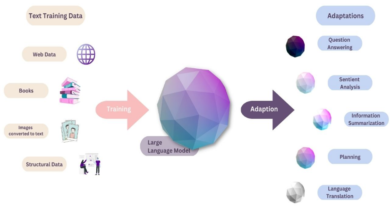Understanding Sustainable Work: Insights Using the Job Quality Framework

The world of work is in a constant state of flux, shaped by a myriad of factors ranging from technological advancements to socio-economic changes. The quality of jobs and the conditions under which they are performed play a pivotal role in shaping sustainable work environments. This article provides an overview of working conditions and sustainable work, drawing from the insights presented in Eurofound’s flagship report on the subject.
The Job Quality Framework: A Comprehensive Approach
The Job Quality Framework is a comprehensive tool that allows for a nuanced understanding of the various dimensions of job quality.
It encompasses seven key dimensions, including the physical environment, work intensity, working time quality, social environment, skills and discretion, prospects, and earnings. Each of these dimensions is composed of various indicators that provide a detailed picture of job quality. By analysing these dimensions, we can gain a comprehensive understanding of the quality of jobs and the conditions under which they are performed.
The Changing Composition of the Workforce
The composition of the workforce has undergone significant changes between 2002 and 2019. These changes have been influenced by a variety of factors, including demographic shifts, technological advancements, and changes in the economic landscape. An increasing trend towards non-standard employment, such as part-time, temporary, and freelance roles, has also played a part in reshaping the workforce. For instance, there has been a significant increase in the number of older workers, reflecting the ageing population in many European countries. Similarly, there has been a rise in the number of workers with higher education, reflecting the increasing demand for skills in the modern economy.
Understanding these changes is crucial for developing policies and strategies that promote sustainable work and improve job quality. It allows us to identify the groups that are most at risk of poor job quality and to develop targeted interventions to improve their working conditions.
The Impact of Job Demands and Resources
The Job Demands-Resources model provides a useful framework for understanding the impact of various job demands and resources on workers’ health and well-being. This model suggests that high job demands can lead to strain and health problems, while adequate job resources can help mitigate these effects and promote engagement.
For instance, high physical demands can lead to physical health problems, while high work intensity can lead to psychological stress. On the other hand, good social support and opportunities for skill development can help workers cope with these demands and promote their well-being. Understanding these dynamics is crucial for developing interventions that promote sustainable work and improve job quality.
The Unequal Distribution of Job Quality
Job quality is not evenly distributed across different sectors, occupational categories, and demographic groups. For instance, workers in certain sectors may face higher physical demands, while those in other sectors may have more opportunities for skill development and discretion. Similarly, workers in different occupational categories and demographic groups may have different experiences of job quality, reflecting the diverse nature of the labour market.
For instance, low-skilled workers and those in precarious employment often face poor job quality, including high physical demands, low pay, and limited opportunities for skill development. On the other hand, highly skilled workers and those in stable employment often enjoy better job quality, including good pay, opportunities for skill development, and a good social environment.
The Role of Gender in Job Quality
Gender plays a significant role in shaping job quality. Men and women often work in different sectors and occupations, which can lead to differences in job quality. Moreover, gender can also influence the experience of job quality within the same occupation. For instance, women may face higher emotional demands or have fewer opportunities for career advancement compared to men.
Understanding these gender differences is crucial for developing policies and strategies that promote gender equality in the world of work. This includes not only promoting equal opportunities for men and women but also addressing the specific challenges faced by women in the labour market.
The Impact of Job Quality on Work-Life Balance
Job quality can have a significant impact on workers’ ability to balance their work and personal life. For instance, long working hours or inflexible work schedules can make it difficult for workers to balance their work and personal responsibilities. On the other hand, flexible work arrangements and supportive social environments can help promote a better work-life balance.
Promoting a good work-life balance is crucial for the well-being of workers and the sustainability of work. It can help prevent burnout, promote job satisfaction, and improve the overall quality of life of workers.
The Way Forward: Promoting Sustainable Work
Promoting sustainable work requires a comprehensive approach that takes into account the various dimensions of job quality. This includes not only improving the physical and social environment of work but also promoting skill development, providing opportunities for career advancement, and ensuring fair earnings. Moreover, it requires addressing the unequal distribution of job quality and promoting equality and inclusivity in the world of work.
Conclusion
The quality of jobs and the conditions under which they are performed play a crucial role in shaping sustainable work environments. By taking a comprehensive approach that considers the various dimensions of job quality, it is possible to promote sustainable work and improve the well-being of workers. As we navigate the changing world of work, it is crucial to continue exploring and understanding these issues to ensure a fair and inclusive future for all workers.



